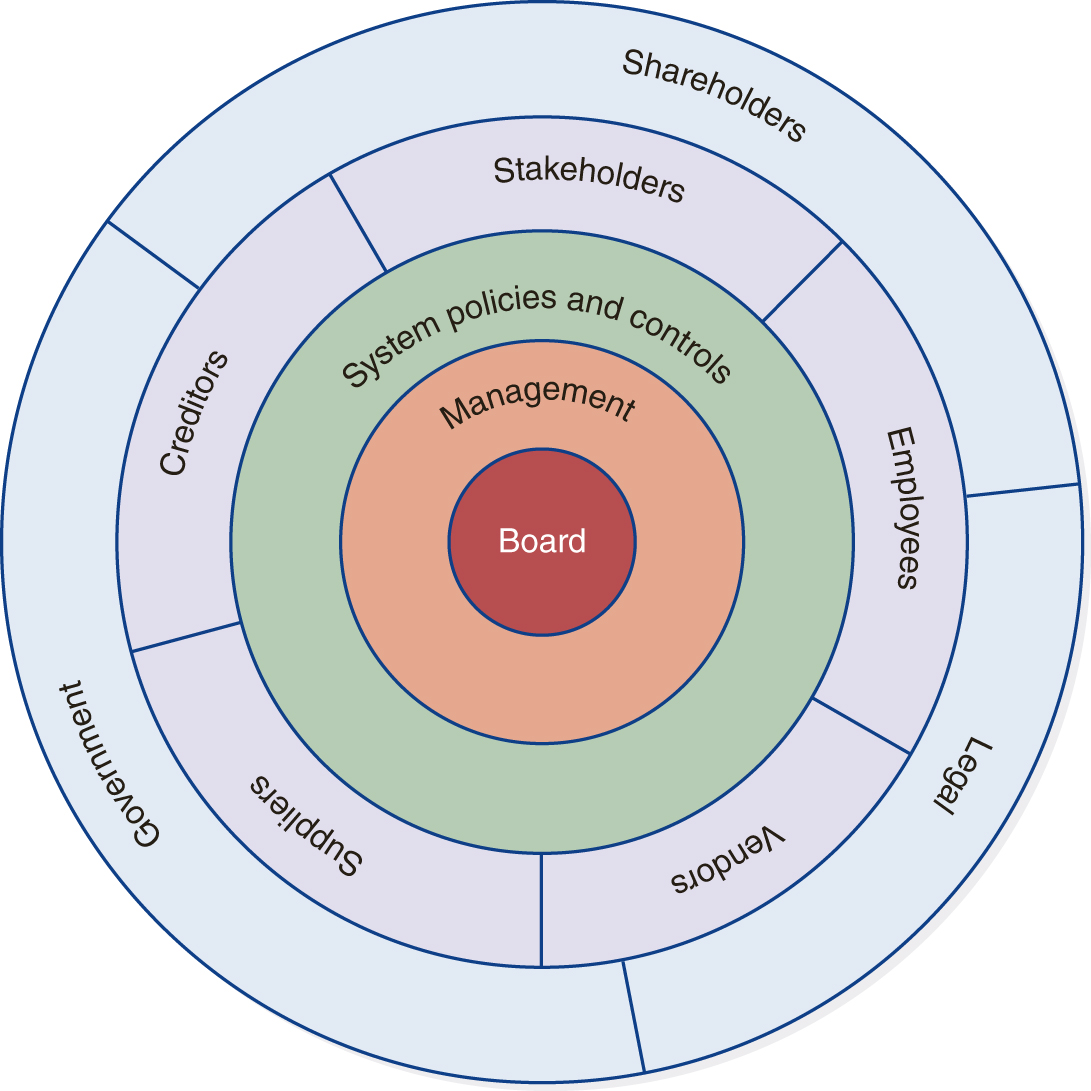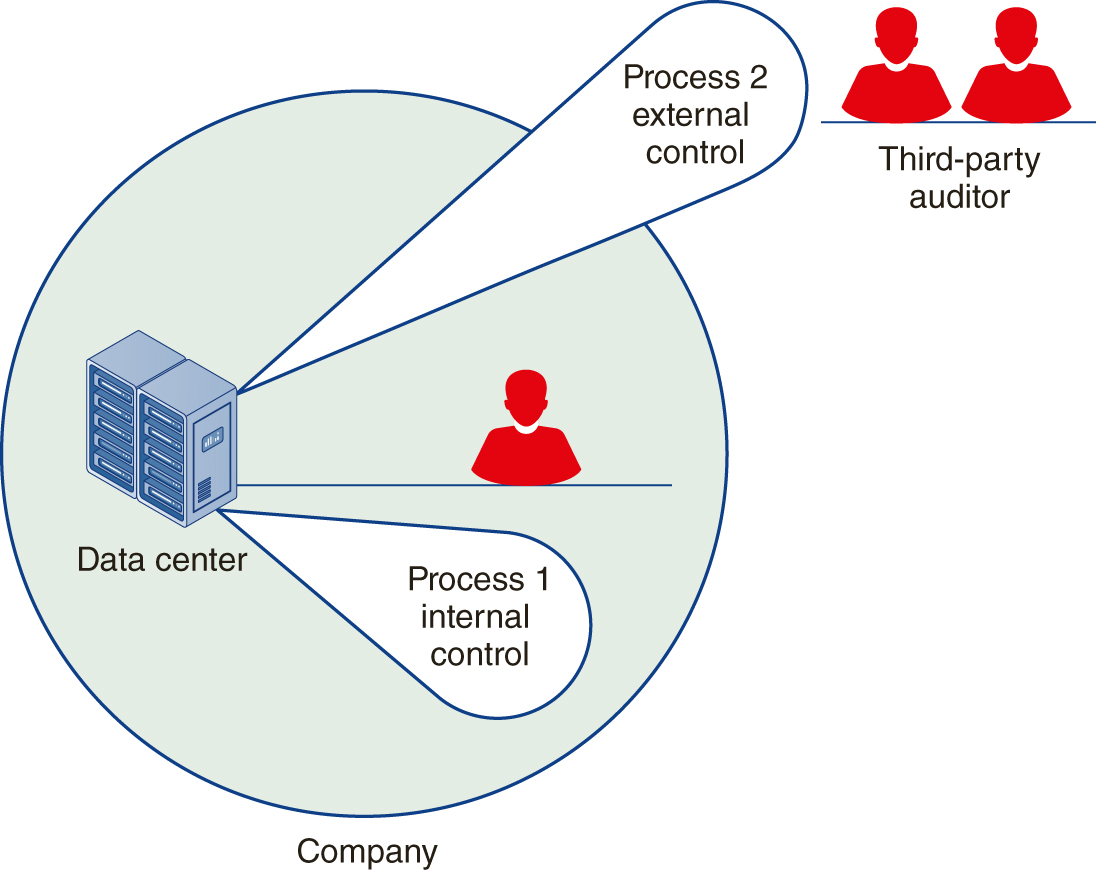Understanding Corporate Governance
Corporate governance combines the processes, policies, laws, and controls that effect the way a company operates. The governance guides the company’s decision-making and administrative processes. The corporate governance, as shown in FIGURE 15-1, is complex and involves people, processes, systems, and more.

FIGURE 15-1 Components that comprise the corporate-governance process.
Understanding Business Strategy
A strategy is a plan of action designed to achieve one or more particular goals. A business strategy, therefore, consists of the plans upon which a company executes to achieve business goals which may include the following:
-
Maximize shareholder value
-
Reduce or manage costs to maximize profits
-
Provide a quality work environment which attracts and retains employees
-
Maintain a high degree of customer satisfaction
-
Support environmentally friendly operations
-
Develop a sustainable, competitive advantage
-
Provide accurate reporting of company operations
Measure What Is Important
After a business defines its strategic plans, the company must determine ways to measure each goal. The initial measurement will establish a baseline for the company’s current level of operations and future measurements will establish the company’s level of improvement.
Inspect What You Expect
After a company defines its business goals and metrics, the company must inspect the underlying factors that drive the business result. In other words, rather than take the company financials at face value, the company should examine the sources from which the values come to ensure each is accurate and free from fraud. The inspection process is also known as auditing.
The auditing process can be internal (done by the company) or external (done by a third-party company), as shown in FIGURE 15-3.

FIGURE 15-3 Companies must audit the source of the values they measure and report using internal or external auditors.
Understanding Internal Controls
The auditing process will identify key stages within processes which the auditor should frequently inspect. To support the process, the company should put in place its own internal controls (policies and procedures) at each of these key stages, as shown in FIGURE 15-4.

FIGURE 15-4 Internal controls allow a company auditor to inspect data values at key stages.
